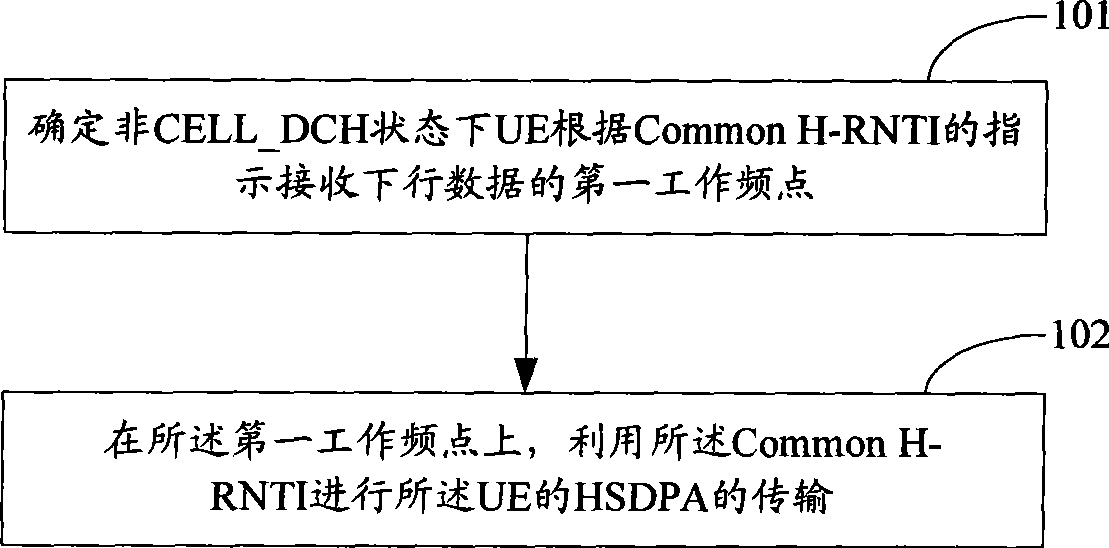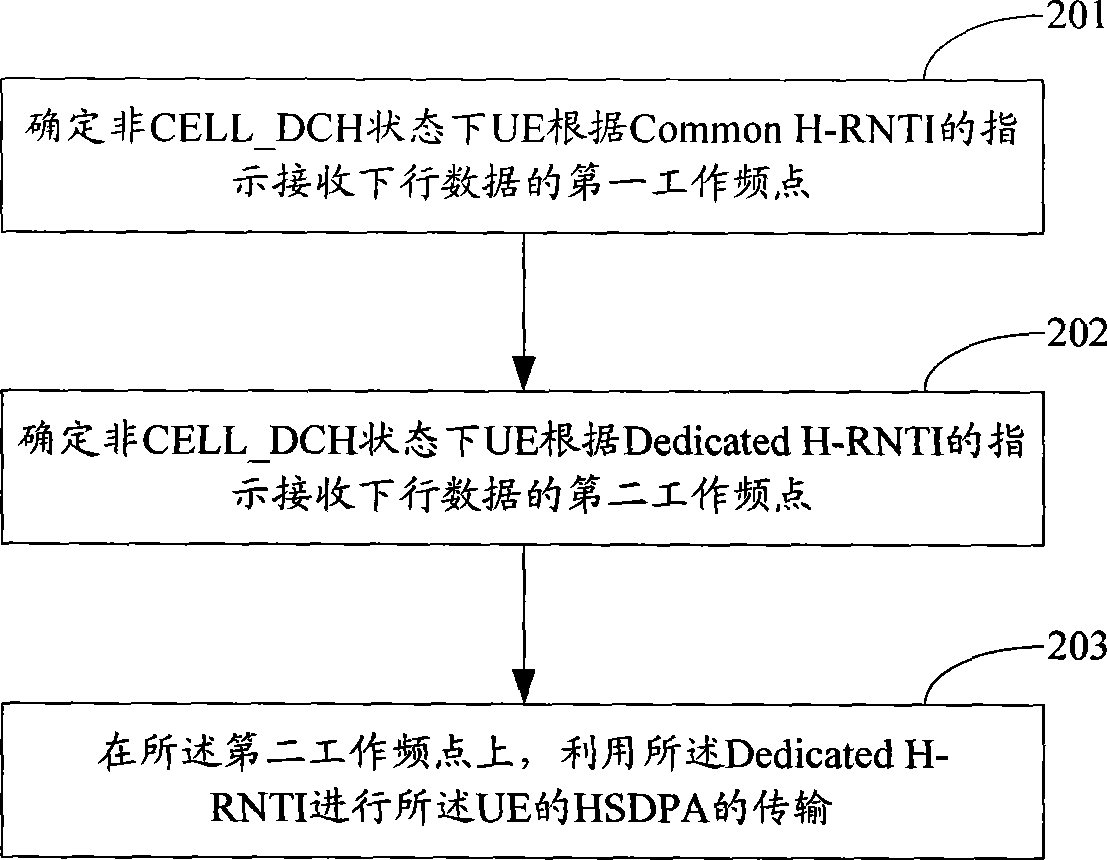Method for high-speed packet access transmission in multi-frequency point system
A high-speed packet access, multi-frequency point technology, applied in the transmission system, digital transmission system, electrical components, etc., can solve the problems that cannot be directly applied to FDD, etc., and achieve the effect of reducing delay and enhancing the ability of data transmission
- Summary
- Abstract
- Description
- Claims
- Application Information
AI Technical Summary
Problems solved by technology
Method used
Image
Examples
Embodiment 1
[0023] figure 1 It is a schematic flowchart of a method for HSPA transmission in a non-CELL_DCH state in a multi-frequency point system in Embodiment 1 of the present invention. Such as figure 1 As shown, the process includes the following steps:
[0024] Step 101, determine the first operating frequency point when the UE receives downlink data according to the instruction of the Common H-RNTI in the non-CELL_DCH state.
[0025]Wherein, the first operating frequency point of the UE may be fixedly set to a specific frequency point, such as a main frequency point. Alternatively, the corresponding relationship between the Common H-RNTI and the first operating frequency point is determined through a specific algorithm. For example, the specific algorithm can be: use the Common H-RNTI to take the modulus of the number of frequency points to obtain the first operating frequency point; or, the first operating frequency point of the UE can also be dynamically determined by the RNC,...
Embodiment 2
[0034] figure 2 It is a schematic flowchart of a method for HSPA transmission in a non-CELL_DCH state in a multi-frequency point system in Embodiment 2 of the present invention. Such as figure 2 As shown, the process includes the following steps:
[0035] Step 201, determine the first operating frequency point when the UE receives downlink data according to the instruction of the Common H-RNTI in the non-CELL_DCH state.
[0036] In this step, the process of determining the first operating frequency point can be compared with figure 1 Step 101 in the flow shown is the same.
[0037] Afterwards, the NodeB can send the HS-SCCH carrying the Common H-RNTI and the corresponding HS-PDSCH on the first working frequency, and the UE monitors the HS-SCCH on the first working frequency, according to the The Common H-RNTI in the HS-SCCH receives the HS-PDSCH.
[0038] Step 202: Determine the second operating frequency point for the UE to receive downlink data according to the indica...
Embodiment 3
[0080] image 3 It is a schematic flowchart of a method for HSPA transmission in a non-CELL_DCH state in a multi-frequency point system in Embodiment 3 of the present invention. Such as image 3 As shown, the process includes the following steps:
[0081] Step 301, determine the first operating frequency point when the UE receives downlink data according to the instruction of the Common H-RNTI in the non-CELL_DCH state.
[0082] In this step, the process of determining the first operating frequency point can be compared with figure 1 Step 101 in the flow shown is the same.
[0083] Afterwards, the NodeB can send the HS-SCCH carrying the Common H-RNTI and the corresponding HS-PDSCH on the first working frequency, and the UE monitors the HS-SCCH on the first working frequency, according to the The Common H-RNTI in the HS-SCCH receives the HS-PDSCH.
[0084] Step 302: Determine the second operating frequency point where the UE receives downlink data according to the indicati...
PUM
 Login to View More
Login to View More Abstract
Description
Claims
Application Information
 Login to View More
Login to View More - R&D
- Intellectual Property
- Life Sciences
- Materials
- Tech Scout
- Unparalleled Data Quality
- Higher Quality Content
- 60% Fewer Hallucinations
Browse by: Latest US Patents, China's latest patents, Technical Efficacy Thesaurus, Application Domain, Technology Topic, Popular Technical Reports.
© 2025 PatSnap. All rights reserved.Legal|Privacy policy|Modern Slavery Act Transparency Statement|Sitemap|About US| Contact US: help@patsnap.com



